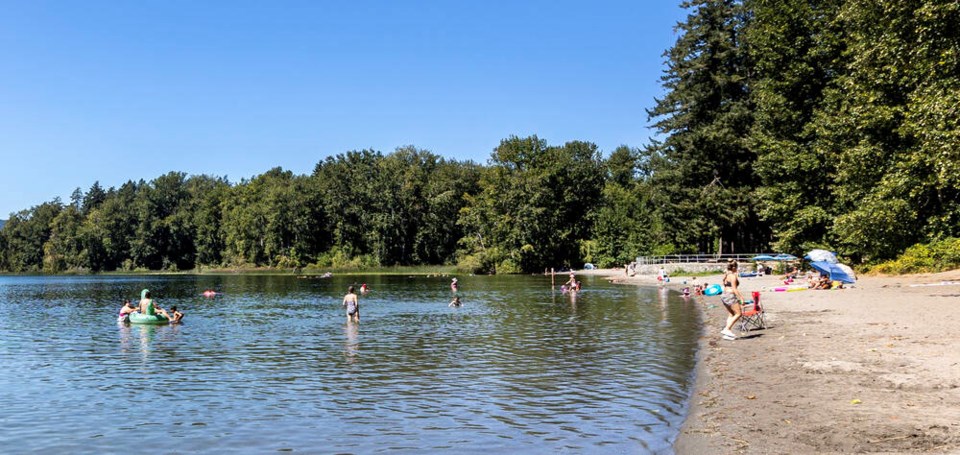People and their pets are being asked to stay out of the water in multiple locations on Elk and Beaver lakes, including Eagle and Hamsterly beaches, because of a blue-green algae bloom.
The Capital Regional District on Tuesday expanded an advisory that was initially issued on Oct. 16.
“Not all blooms are easy to see and toxins can still be present in the water even if you cannot see a bloom,” a CRD statement says. “Blooms are unpredictable and may occur at any time.”
Runoff from roads and nearby agricultural fields over the years have contributed to algae blooms, low oxygen levels, and reduced water quality in Elk and Beaver lakes.
When water oxygen levels become low, nutrient-rich sediment can create fertile ground for algae blooms, which can be harmful to humans and pets.
Cyanotoxins produced by blue-green algae can cause headaches and abdominal pains in humans, as well as lethal liver damage in dogs.
In September, the CRD installed an oxygenator that’s expected to help combat blue-green algae blooms by reducing phosphorous levels in the water.
Results from the $1.5-million oxygen-generating machine, which regularly pumps oxygen into the lower layer of Elk Lake, are expected next year.
More than 1.5 million people a year visit the regional park, the most popular park in the CRD.
>>> To comment on this article, write a letter to the editor: [email protected]



